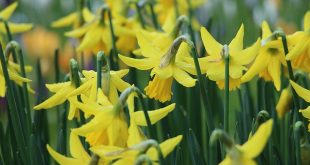Watering plants while you are away can be a challenge. Not all of us are lucky enough to have willing relations or neighbours. Even if we do, it can be an unreasonable burden to request, remember, you will need to reciprocate and they may have a bigger garden!
Irrigation systems can sound complex and expensive, but moderate cost easy to install DIY systems are available. Garden centres stock the leading two UK suppliers, Hozelock and Gardena. Their websites have comprehensive instructions and configuration planning tools.
The basic components are mostly interchangeable. Attractively priced starter kits are worth considering. You can add to them as required.
A typical system will comprise of these key components;
Timer/Water computer
This turns the water on at preset times per day. Optional rain sensors on some models save water as they only water when necessary. For average temperatures, a setting of 5-10 minutes, three times a day is normally sufficient with drip head watering. The entry-level devices will be sufficient for most gardens. Don’t spend more on unnecessary advanced features. Multiple output devices allow for more than one water circuit, such as one for the borders and another for the lawn.
Filter/Pressure reduction (Master Unit)
This filters the incoming water supply and reduces it down to the required pressure. Systems vary in size, depending on your garden. The Gardena Master Unit 2000, supports up to 1000, 2l per hour drip heads. The smaller 1000 unit can supply 500 2l/hr drip heads.
13mm piping
This is used for the backbone pipework such as a loop around the garden perimeter. Push fit joints are easy to install. It is black so is unobtrusive. The pipework easily kinks, so avoid sharp bends or use the various joints available.
4.6mm piping
This is used to feed the actual plants. A single pipe can connect to multiple drip heads .
Sprays and drip heads
Both spray nozzles and drip heads can be configured with the system. A choice of types and sizes available. Drip heads are very efficient on water usage. Place drip heads close to the main stem of the plant to get water to the roots where it is needed. Adjustable and fixed flow rates types can be used to cater for plants and pots of different sizes.
Other components
A wide range of joints, taps, clips and supports are offered. There are also small “leaky” hoses and sprinklers for larger areas to be watered, these do use more water.
Lawn watering
Lawns are incredibly resilient. An unwatered lawn that has lost all its green in a very hot Summer will usually recover when the rain returns. If though you want to retain that green lushness, then dedicated water systems similar to those used at golf courses can be installed. A dedicated water circuit is needed to deliver the higher volumes of water needed. The pipework will require burying under the lawn to feed the pop up sprinklers. This is not beyond a competent DIYer. Avoid unnecessary watering by using a timer with a rain sensor.
Planning your system
Decide what you need to water. Typically this will be containers, hanging and wall baskets, fruit bushes/trees, vegetables and other water hungry plants such as hydrangeas. You can add more if needed, particularly for very sunny corners that quickly dry out.
Once you have decided on the priorities, you need to install the main distribution or backbone 13 mm pipe. This for example could do a loop around the perimeter of the garden. It needs to start where the water tap is and where you will located the timer and master unit. It’s best to have a dedicated tap for the timer for convenience and to avoid accidentally turning it off! One master unit 2000 can feed up to 1000 2l/hr drip heads. If possible run several backbone circuits from the master unit. For larger gardens, more than one circuit may be needed, using a second timer, these can be watering at a different time.
Wherever you need to water plants, put a reducing TEE in the backbone pipe, if budgets allow you can add a small tap. It is possible to by connectors that screw directly into the backbone pipe, in my experience they often leak, so I avoid them. Run the 4.6 mm feed pipe between the reducing TEE and the plants. Locate the drip head close to the stem, secure it with a stake as they have a habit of moving.

Choosing the heads
The fixed drip heads are the most useful. 2l/hr and 4l/hr Gardena drip heads are orange and black. Adjustable drip heads go up to 10l/hr. Sprays, misters and many other attachments are on offer. A single feed pipe can supply about 10 2l/hr heads, less with some of the others. There’s guidance on pipe capacity on the websites or you can rely on a combination of common sense and trial and error as I do! For watering rows of fruit or vegetables, the inline drip heads are easiest to use.
 Gardeners Club The Gardeners Club is a free to join online club for everyone with an interest in gardening and gardens.
Gardeners Club The Gardeners Club is a free to join online club for everyone with an interest in gardening and gardens.






